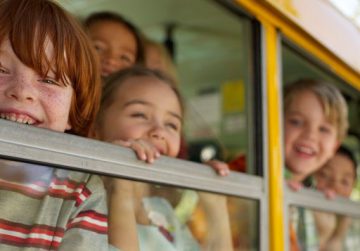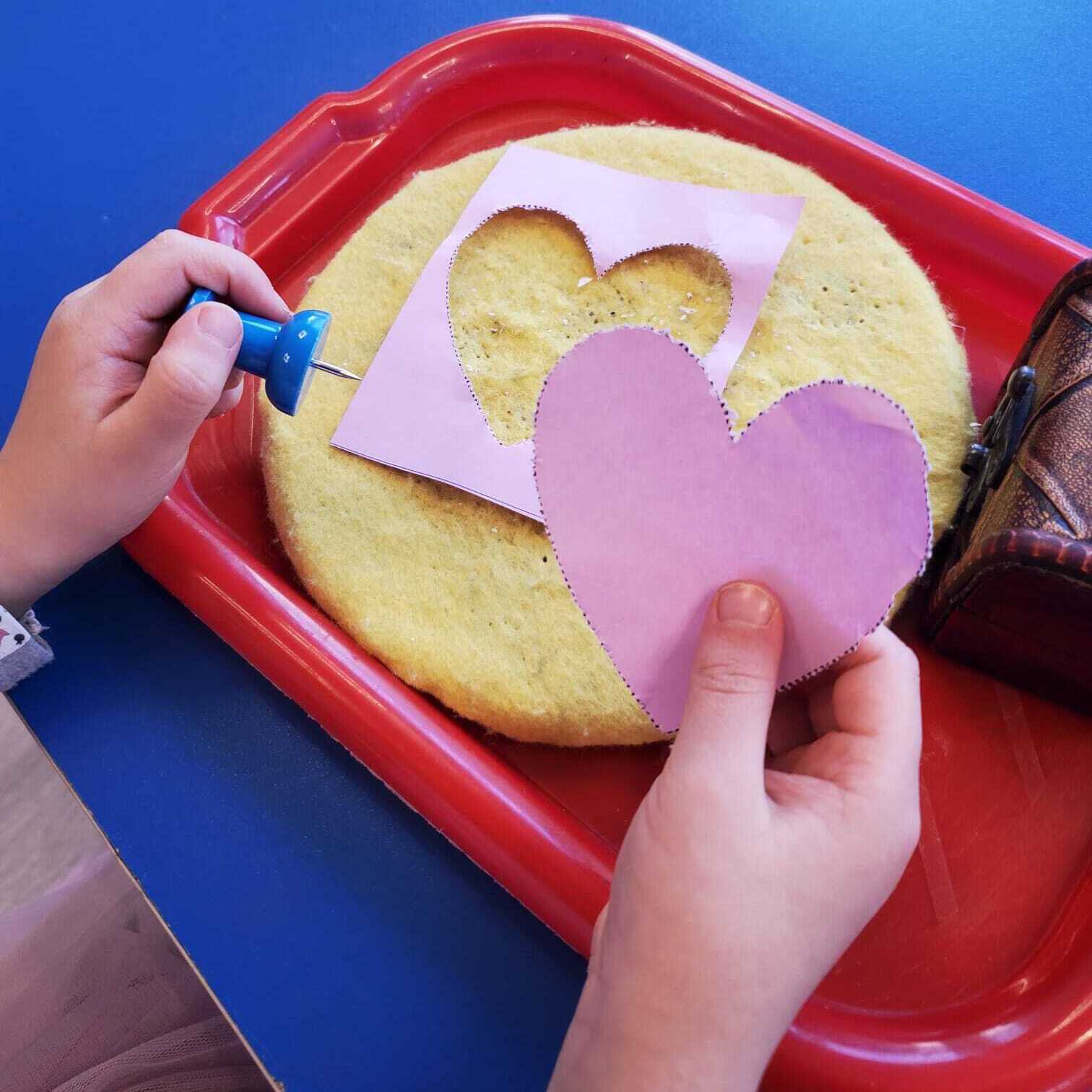
PRACTICAL LIFE
Practical life activities include skills for everyday living that develop a child’s muscular control, which consolidates and develops coordination of movements. These activities teach both fine and gross motor skills, advancing the child’s control of his/her body, all while building concentration, independence, and social skills.
The activities of practical life focus on care of self (washing hands, getting dressed), care of their environment (dusting, sweeping, washing a table), grace and courtesy (greeting an individual, saying please and thank you) and control of movement (walking on a line). Children may have already indirectly experienced many of the practical life activities presented in a Montessori classroom, and we look forward to further honing their skills.
These purposeful activities prepare the child for more complicated work in other areas of the classroom such as language and mathematics. Repetition of work in the practical life area leads to refinement of children’s fine and gross motor skills.
Children practically gravitate towards the practical life area of the classroom as it enables them to do adult work in a child size environment.
SENSORIAL
Sensorial comes from the word sense/senses. The sensorial materials are used to help children develop and refine their five senses, allowing the child to experience the material in this area in a sensory manner. Children are presented with various sensorial activities, which introduce the concept of size and dimension, colour, weight, temperature, smell etc. The sensorial area of the classroom also provides a solid foundation for further intellectual growth in other areas of the classroom such as language and mathematics.
The materials in this area are scientifically designed to bring clarity and order to the child’s world. Through the senses the child studies his/her environment, the child then begins to understand the environment around them. In a Montessori environment the child is a “Sensorial Explorer”.


LANGUAGE
There are 3 aspects of the language area: speaking, writing and reading. Children are exposed to spoken language by way of classified cards, reading stories and poems, and playing sound games where they identify sounds (letters) and their corresponding objects. They are then introduced to the written aspect of language through activities such as the sandpaper letters (introducing the child to the symbol of letter by way of their hand) and the moveable alphabet (forming words with the phonetic sounds which they have learned). Children then start to read phonetically, thus working towards reading of full sentences!
MATHEMATICS
Mathematical concepts are introduced to young children in a concrete and manipulative way, which teaches them to count and calculate. Children are indirectly exposed to mathematical concepts through all the areas of the environment. Once a child is able to recognize and connect numerals and quantity from 0-10, more abstract forms are introduced.
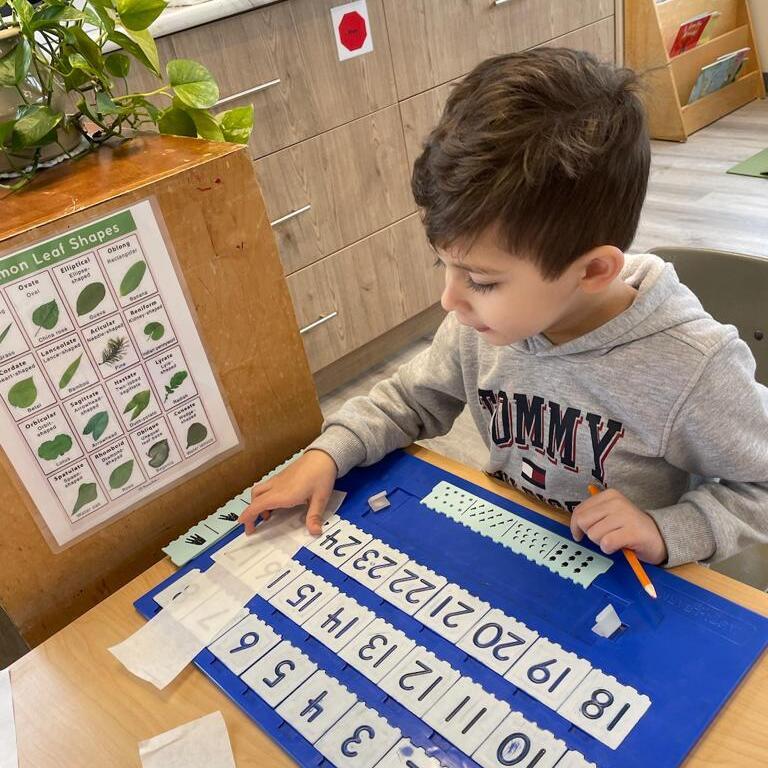
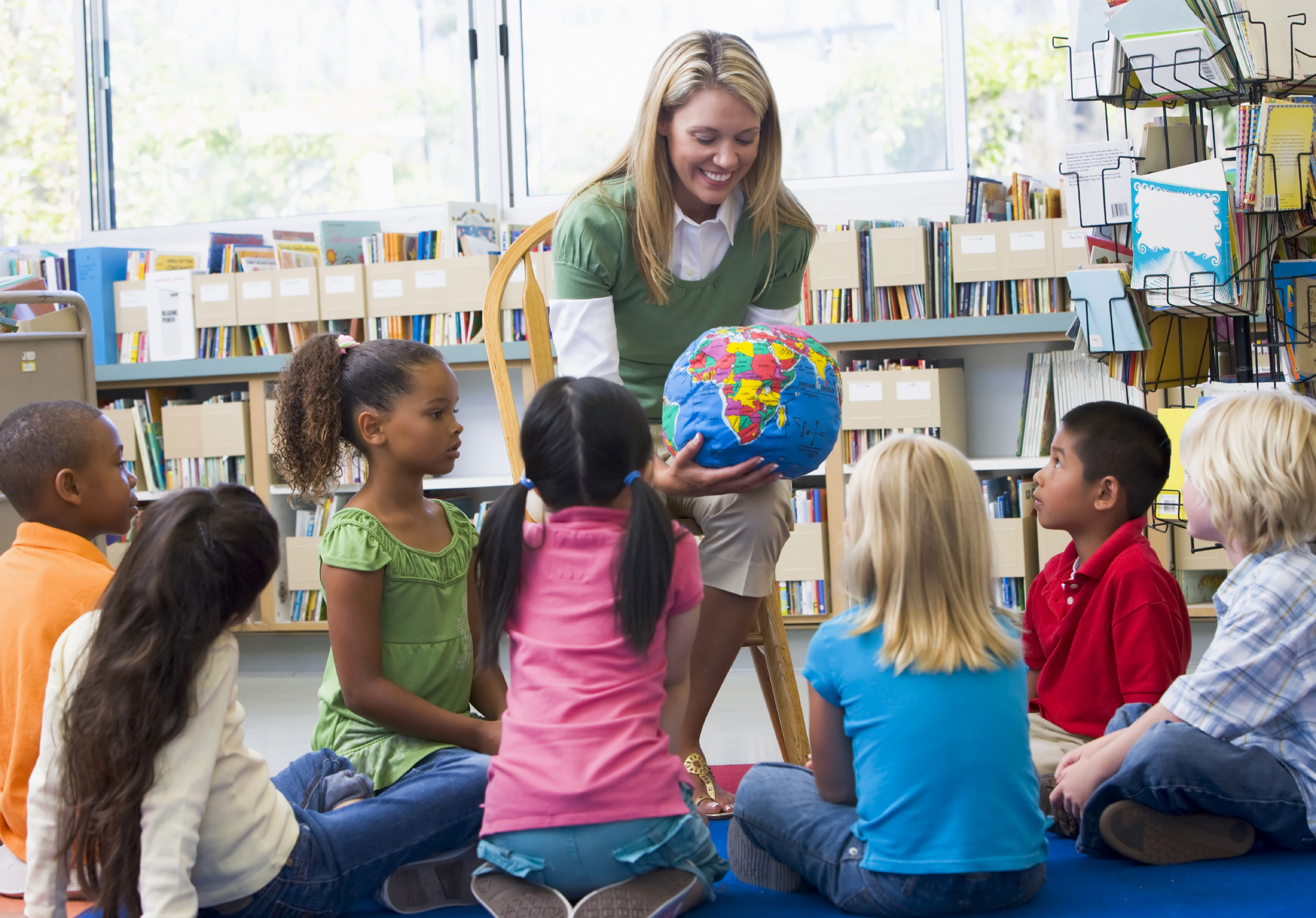
CULTURAL
Cultural studies are those that enrich the child’s understanding of his/her world. In a Montessori environment, teachers present activities in cultural exploration exposing children to the world around them. The cultural area consists of geography, botany, zoology, science, music and art.
Geography – Children are introduced to the globe and learn about the continents of the world through puzzle maps, leading to introduction of names of individual countries. Furthermore, there are a variety of flags in the classroom expanding children’s knowledge of the world. We also have discussions about animals from different continents and their habitats. Different cultural holidays such as Christmas, Kwanza, Hanukkah, Diwali, and Chinese New Year etc. are also discussed and celebrated in the classroom. This exposes children to different traditions, costumes and foods of other countries. Children are also introduced to land and water forms such as island and lake.
Biology – Through circle time, small group and individual lessons children are introduced to the animal kingdom. We also introduce children to the life cycle of plants, fruits and vegetables during different seasons. Nature walks around the neighbourhood provide an opportunity for discussion of seasonal changes in our environment.
ART, MUSIC and MOVEMENT
In a Montessori classroom, children are encouraged to express their feelings and creativity through art, music and movement. Art activities are open-ended allowing children to express their creativity freely through cutting, gluing, collage, paper tearing, coloring/drawing using different mediums such as crayons, paints, glue, clay etc. In addition to these activities children are also introduces to famous artists and composers and their work.
Traditional nursery rhymes, action songs, and songs from around the world are sung at circle time as a group.
Music and movement are great for the brain development of young children. In addition to our regular music and movement component in the classroom, children have music classes once a week with a trained music teacher.
Our music program includes singing, dancing/movement, and exposure to different instruments and composers. The purpose of music in the Montessori curriculum is to develop the children’s nonverbal affective communication, which will increase their understanding and enjoyment of music, and enhance their ability to express themselves through music.
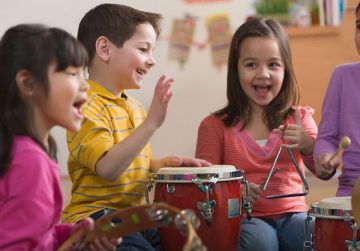

PHYSICAL ACTIVITIES
Children in the all-day, kindergarten and grade 1 program have gym classes twice a week. Gym-time is one of the children’s favourite activities at school, as they are able to move freely and release energy.
Children who attend in the half-day morning or afternoon class are taken outside to the playground for the last 15 to 20 minutes of class (weather permitting)
Physical education will help young children stay healthy and practice basic age appropriate skills such as body awareness, motor skills and rhythm.
FIELD TRIPS
At Burnaby Montessori School we typically plan three to four field trips throughout the school year. Our first field trip of the school year is usually to the pumpkin patch to teach children about the harvest season. Field trips are planned well in advance and are typically related to what the children are learning in the classroom. We view field trips to be an opportunity to further expand and relate to what the children are learning in the classroom.
In the past we have visited various pumpkin patches, Vancouver Aquarium, Grouse Mountain, Burnaby Village Museum, Coursel Theatre for Young Children and the Honey Bee Centre.
Field Trip Transportation – Parents/guardians are responsible for transporting the children to and from the field trip. Parents/guardians are required to accompany each child during the field trip.
